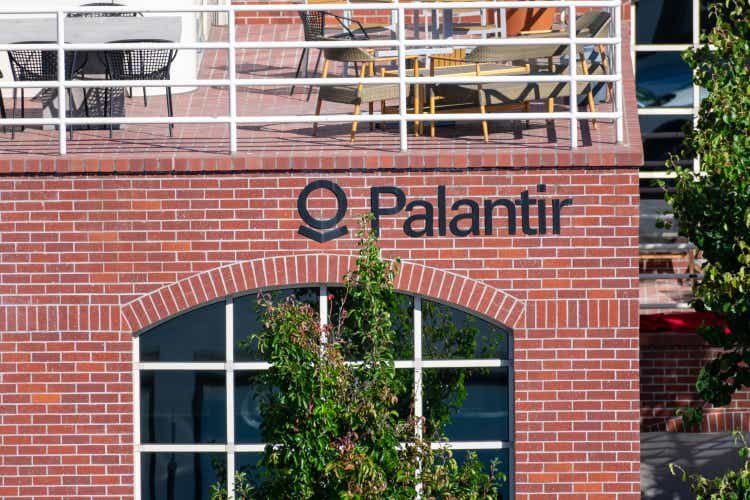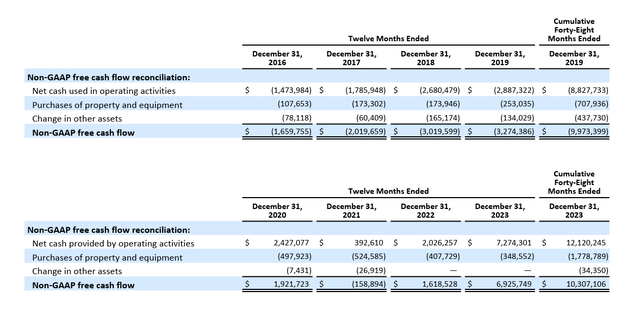The Housing Market and the Challenge of Low Supply
March 19, 2024 | by stockcoin.net

The housing market is currently experiencing a significant challenge due to low supply, primarily driven by homeowners who are hesitant to move. This reluctance can be attributed to high interest rates, making it less affordable for homeowners to relocate. However, amidst this challenging landscape, there are two high-yield investment opportunities that present themselves. Annaly Capital Management, Inc. (NLY) offers a remarkable yield of 13.3% and has strategically focused on 30-year mortgages, aiming to enhance earnings. On the other hand, Greystone Housing Impact Investors LP (GHI) provides a yield of 9.2%, specializing in two approaches: investing in mortgage revenue bonds and developing multifamily properties. GHI’s spread-based MRB business is ideally positioned to benefit from declining interest rates, while their development segment has demonstrated success in property sales and continues to expand its project pipeline. Looking ahead, the housing market’s outlook suggests the possibility of declining interest rates in the second half of the year, which could potentially improve the performance of both NLY and GHI’s businesses.

Challenges in the Housing Market
The housing market is currently facing challenges due to homeowners’ reluctance to move. Many homeowners are choosing to stay in their current homes rather than selling and purchasing a new property. This low supply of available houses is creating a shortage in the housing market, resulting in increased competition among buyers and driving up prices. The reasons for homeowners’ reluctance to move vary, but factors such as emotional attachment to their current property, the hassle of moving, and the desire to avoid the stress of finding a new home in a competitive market all contribute to this trend.
Another challenge in the housing market is high interest rates, which are making it less affordable for homeowners to move. When interest rates are high, borrowing costs increase, making it more expensive to obtain a mortgage for a new home. This can deter potential buyers from entering the market or upgrading to a larger, more expensive property. The higher interest rates also reduce the purchasing power of buyers, limiting their options when it comes to finding a suitable home within their budget.

Investment Opportunities in the Low-Supply Housing Market
Despite the challenges in the housing market, there are still investment opportunities to be found. Two notable opportunities in the low-supply housing market are NLY (Annaly Capital Management, Inc.) and GHI (Greystone Housing Impact Investors LP). Both companies offer high yields and have strategies in place to capitalize on the current housing market conditions.
NLY: Annaly Capital Management, Inc.
NLY, a real estate investment trust (REIT), is an attractive investment opportunity for those looking to benefit from the low-supply housing market. NLY offers a yield of 13.3%, making it an enticing option for investors seeking high returns. One of the key strategies implemented by NLY is its focus on 30-year mortgages. By targeting longer-term mortgage products, NLY aims to improve its earnings and take advantage of the current market dynamics. This approach allows NLY to generate consistent cash flows over an extended period, providing stability and potential long-term growth for investors.
GHI: Greystone Housing Impact Investors LP
GHI is another investment opportunity worth considering in the low-supply housing market. This company offers a yield of 9.2% and has a dual approach to investing. GHI’s strategy involves investing in mortgage revenue bonds (MRBs) as well as developing multifamily properties. This diversified approach allows GHI to capitalize on both the financial aspects of the housing market and the demand for affordable housing. By investing in MRBs, GHI benefits from the spread-based business model, which generates income from the difference between the interest paid on the bonds and the interest collected on the mortgages. Additionally, GHI’s development segment focuses on the construction and sale of multifamily properties, which is in high demand due to the limited supply of available housing options.

GHI’s Mortgage Revenue Bond (MRB) Business
GHI’s MRB business is a significant contributor to its overall investment strategy. This segment operates on a spread-based business model, meaning that GHI earns income from the difference, or spread, between the interest it pays on the bonds and the interest it collects on the mortgages. As interest rates decline, the spread between these two rates widens, resulting in increased profitability for GHI. This positions GHI to benefit from any potential decline in interest rates, making it an appealing investment in a market where rates are expected to fluctuate.

GHI’s Development Segment
In addition to its MRB business, GHI also has a successful development segment. This segment focuses on the construction and sale of multifamily properties, which cater to the growing demand for affordable housing options. GHI has been successful in selling properties in this segment, indicating a strong market demand. Furthermore, GHI has a growing pipeline of projects, suggesting that it has the potential for continued growth and expansion in the future. By combining its MRB business with its development segment, GHI is able to diversify its investments and maximize its opportunities in the low-supply housing market.

Outlook for Interest Rates and Performance
The outlook for interest rates in the second half of the year suggests the possibility of a decline. As interest rates decline, borrowing costs decrease, making it more affordable for homeowners to move and potentially increasing demand in the housing market. This could benefit both NLY and GHI, as it may lead to an uptick in sales and new mortgage applications. Additionally, the widening spread between the interest rates on GHI’s MRBs and the interest collected on mortgages could further improve its profitability.
In conclusion, the challenges in the housing market, such as homeowners’ reluctance to move and high interest rates, present investment opportunities for individuals and organizations looking to capitalize on these conditions. NLY and GHI offer attractive yields and have strategies in place to maximize their returns in the low-supply housing market. With the potential for declining interest rates in the future, both companies are positioned to benefit from improved performance and increased profitability. Investors seeking to enter the housing market should consider these investment opportunities for potential long-term growth and stability.

RELATED POSTS
View all





